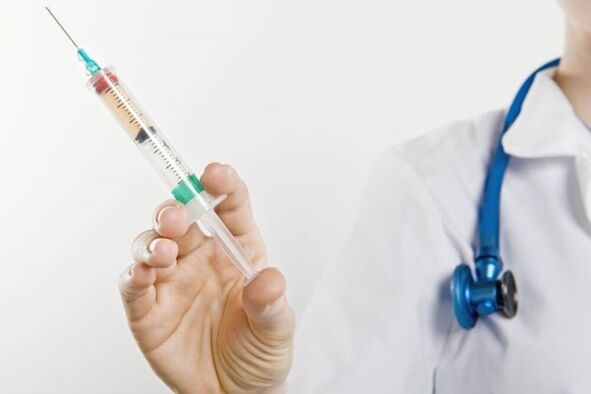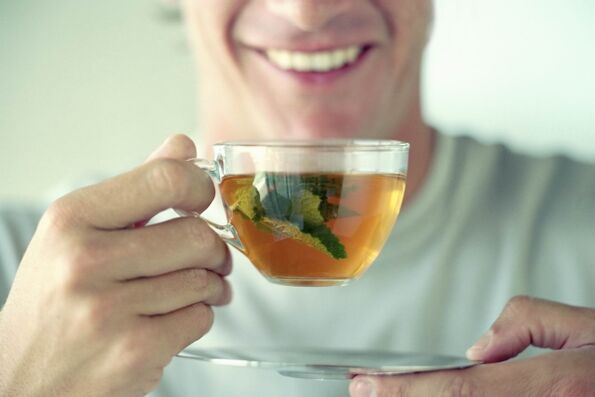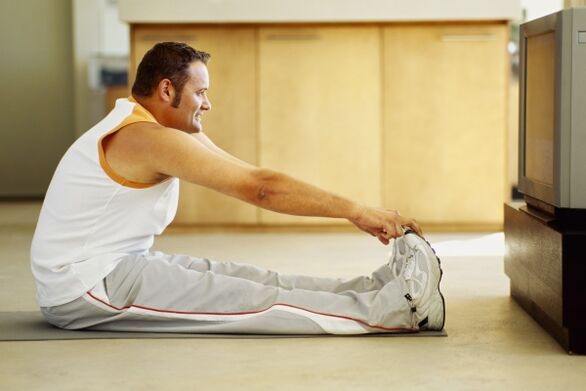Prostatitis is an inflammatory disease.It is accompanied by unpleasant symptoms and is fraught with various complications, and therefore requires mandatory treatment.It can be conservative or surgical.In each case, an integrated approach is required.
Treatment of prostatitis in most cases is carried out using conservative methods.They include drug therapy, physiotherapy, changes in diet and lifestyle, gymnastics and traditional medicine.In some cases, surgery may be required.
Drug treatment of prostatitis
The main direction in the conservative treatment of prostatitis is the use of various medications.They are used to eliminate the underlying cause of the pathology, as well as the accompanying symptoms.Drug therapy for prostatitis involves the use of various dosage forms: tablets, injections, rectal suppositories, microenemas.
Tablets for prostatitis
Drugs for the treatment of prostatitis in tablet form are etiotropic, pathogenetic and symptomatic.The first are used in cases of infectious origin of the disease, the second are needed to eliminate congestion, and the third relieve the main manifestations of pathology.
Etiotropic drugs are used for antibacterial therapy.They destroy pathogenic microorganisms that provoke an inflammatory process in the prostate tissue.In the acute form of the disease, antibiotics in tablet form are used from 3-4 days - before this, parenteral administration is preferred to quickly achieve an effect.
To select a drug, it is necessary to first determine the pathogen and its sensitivity to the drug.To treat prostatitis, antibiotics of the following groups can be prescribed:
- fluoroquinolones;
- penicillins;
- macrolides;
- tetracyclines;
- sulfonamides.
Antibacterial therapy is usually continued for 1-1.5 weeks.At the same time, probiotics are prescribed to normalize the intestinal microflora.
α-blockers are also prescribed for the treatment of prostatitis.They relax muscles and relieve spasms.This makes urination easier - difficulty is one of the main signs of the disease.The therapeutic course usually lasts at least six months.
Another group of drugs for the treatment of prostatitis are non-steroidal anti-inflammatory drugs.They are used to relieve inflammation and pain.
For psycho-emotional disorders, which often accompany prostatitis, sedatives and antidepressants are prescribed.Herbal based products are effective.
For the treatment of prostatitis, specific drugs with prostatotropic effects are also used.They relieve inflammation and pain, improve microcirculation and metabolic processes.
Injections
The main advantage of medications in the form of injections is the rapid delivery of the drug to the pathological focus.Often, injection therapy is prescribed to relieve an acute illness, and then they switch to other medicinal pathologies.
Popular injections for prostatitis are non-steroidal anti-inflammatory drugs that relieve inflammation and pain.
For chronic prostatitis, immunomodulators are often used.Such drugs increase the body's resistance and reduce the risk of exacerbations and relapses of the disease.

If the disease is of bacterial origin, antibacterial therapy is necessary.This treatment is continued for an average of 1-1.5 weeks.
Rectal suppositories
The use of such a dosage form is attractive due to its rapid absorption into the local bloodstream, delivery of the drug directly to the pathological focus, and minimization of the risk of adverse reactions, especially in relation to the gastrointestinal tract.
The following rectal suppositories can be prescribed for the treatment of prostatitis:
- With antibacterial effect.
- Anti-inflammatory drugs.
- Immunomodulators.
- Antispasmodics.
Microclysters
This treatment option is usually used to combat inflammation, provide antibacterial treatment, and relieve pain and swelling.For prostatitis, the following microenemas can be used:
- propolis – relieves inflammation, stimulates blood supply;
- iodine – antiseptic effect;
- sea buckthorn, fir, eucalyptus, peach oils.
Folk remedies
Alternative medicine is effective in treating prostatitis.You can use the following recipes:
- Pass 0.5 kg of peeled raw pumpkin seeds through a meat grinder, add 0.2 kg of honey and mix thoroughly.Form small balls from the resulting mass and store in the cold.Eat one such ball half an hour before meals twice a day.Be sure to chew it for two minutes.
- Brew 1 tbsp.l.crushed hazel bark or leaves with a glass of boiling water and leave covered for half an hour.Then filter and take a quarter glass four times a day.
- Brew 1 liter of boiling water 1 tsp.dry wormwood.When the infusion has cooled to 40 degrees, filter it and strain.Use for microenemas - 100 ml of solution per procedure.Repeat for a week.
- Prepare juice from fresh parsley and take 1 tbsp three times a day.l.half an hour before meals.
- Mix hazel leaves, cinquefoil root and cornflower flowers in equal proportions.Brew 3 tbsp.l.collect three glasses of boiling water and leave overnight, filter in the morning and take a glass three times a day before meals.

Physiotherapy, massage
One of the effective areas in the treatment of prostatitis is physiotherapeutic procedures.The following methods are often used:
- cryotherapy;
- ultrasound therapy;
- electrophoresis or phonophoresis with medications (anti-inflammatory drugs, anesthetics, antibiotics);
- hardware electrical stimulation;
- magnetic therapy;
- laser therapy;
- darsonvalization;
- galvanization;
- microwave therapy;
- healing baths;
- mud therapy;
- UHF therapy.
Physiotherapeutic methods of treatment also include massage.It can be done manually or using an electric massager.In any case, such treatment should be carried out by a specialist, since in the absence of appropriate experience, the procedure may be ineffective and can even cause harm.
Diet, lifestyle
A conservative approach to the treatment of prostatitis also implies certain changes in lifestyle.The following rules must be observed:
- Quit smoking and alcohol.
- Normalize your weight if necessary.This is achieved by gradually reducing daily calories and exercising.
- Moderate physical activity.You definitely need to walk - take at least 10 thousand steps a day.This is very important for eliminating and preventing congestion.
- Regular sex life.It is important to limit yourself to one sexual partner and use condoms.
- Strengthening the immune system.This is achieved by moderate physical activity, a balanced diet, giving up bad habits, and hardening.Periodically, you should take a course of a vitamin-mineral complex - the appropriate option should be selected by your attending physician.
You should also pay attention to your diet.It must meet the following requirements:
- Avoid fatty foods and highly extractive foods - spices, hot seasonings, pickles, marinades, smoked meats.
- Avoid products that increase gas formation.This applies to legumes, cabbage, confectionery, carbonated drinks, kvass, and black bread.
- Enrich your diet with fermented milk products, fresh vegetables, fruits, and herbs.
- It is necessary to regularly consume fish and seafood.
- Adhere to the optimal drinking regime.If there are no other doctor's instructions, then 2-2.5 liters of liquid are needed per day.It can be plain or mineral (still) water, green or herbal tea, freshly prepared fruit drink, compote, juice.Strong tea and coffee should be avoided.
- For cooking, you should limit yourself to boiling, stewing, baking, and simmering.
Exercise
Physical therapy is useful for prostatitis.It can also be performed at home.

Useful exercises:
- In a standing position, squeeze the muscle, simulating stopping urination.Hold this position for five counts, then relax.Do 10 repetitions.
- Lie down on the floor.Raise your legs and pelvis straight at the same time, performing the “birch tree” stance.At the extreme point you need to fixate and hold out for as long as possible.
- Lying on your back, raise your legs a few centimeters from the floor and perform cross movements, imitating scissors.After a short rest, repeat the exercise, but lying on your stomach.
- Lying on your back, raise your legs and imitate riding a bicycle.Increase the pace gradually.Perform the movements first forward, then in the opposite direction.
- Lie on your stomach.Raise your straightened legs 5 cm from the floor and hold for several seconds.Return to the starting position and do several repetitions.Repeat the exercise, raising your legs one at a time.
- Perform shallow squats, while spreading your knees to the sides.The feet should not come off the floor, the back should be straight.
- Stand up to the support and swing your legs – 15 times each.
- Walking on your buttocks.You need to sit on the floor and alternately move your buttocks forward.You need to go back in the same way.
- Sit on the floor and straighten your legs, slightly apart.Bend over, trying to reach your socks.
Exercises should be performed smoothly, monitoring your breathing.Increase loads gradually.The admissibility of such exercises should be discussed with your doctor.
Surgical treatment
In most cases, prostate treatment is carried out using conservative methods, but sometimes the only option is surgery.The following methods are possible:
- Prostatectomy – removal of the prostate gland in whole or in part.The operation can be endoscopic or abdominal.
- Resection of the prostate – removal of a fragment of the gland.There are suprapubic, laparoscopic and transurethral resection.
- Circumcision (circumcision) – cutting off the foreskin in a circular manner.Performed for chronic prostatitis and for its prevention.
- Abscess drainage.This surgical intervention is minimally invasive and involves aspiration of purulent contents through a puncture with a needle, followed by washing the cavity with antiseptics.
Prostatitis is a fairly common pathology.Various methods are used in its treatment: drug therapy, physiotherapy, physical therapy, special diet, surgery.In any case, a specialist must select the appropriate tactics and monitor its effectiveness.























